News from the science #3: what is a lab-on-a-chip? [eng-ita]
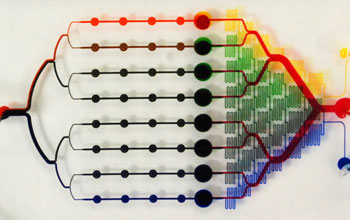

A team of engineers from Rutgers University have developed a lab-on-a-chip capable of analyze sweat or blood in order to detect multiple biomarkers linked to several diseases.

Un team di ingegneri della Rutgers University ha sviluppato un nuovo tipo di lab-on-a-chip in grado di analizzare il sudore o il sangue in modo da individuare un gran numero di bio-marcatori collegati a diverse malattie.
Questa tecnologia può essere utilizzata nei dispositivi indossabili, cosi come nei dispositivi portatili.
Don’t you know what is a lab-on-a-chip?
Non sai che cosa è un lab-on-a-chip?
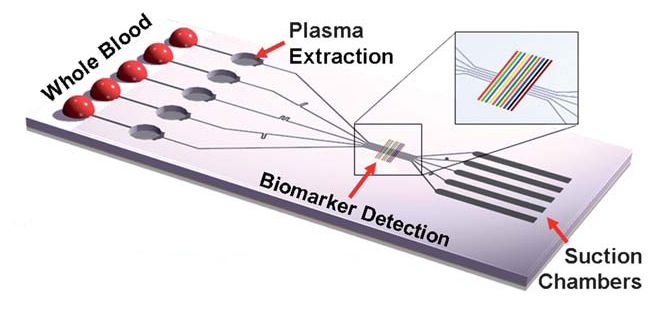
from www.microfluidicfuture.com
On this chip there are a subset of micro-electro-mechanical systems (MEMS) devices are able to use a small quantity of fluid (as blood or sweat) to detect a set of biomarkers.
Su questo chip ci sono un sottoinsieme di sistemi micro elettro meccanici (MEMS) che possono usare una piccola quantità di fluido (come sangue o sudore) per individuare un insieme di bio-marcatori.
Puoi immaginarlo come un grande e complesso laboratorio su un piccolo ed economico chip.
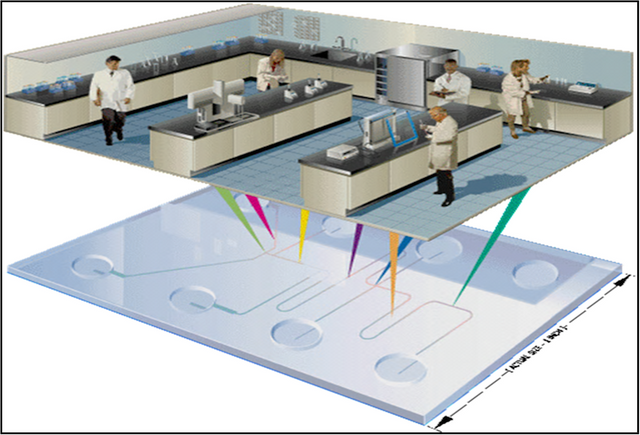
The older lab-on-a-chip can detect just one or two biomarkers, but often are insufficient to detect a specific disease such as cancer, inflammatory disease or heart disease.
To get an accurate diagnosis is necessary to be able to analyze multiple biomarkers at the same time.
That is why the new lab-on-a-chip (size few mm^2) developed at Rutgers University is an innovative solution.
I vecchi lab-on-a-chip possono individuare uno o due bio-marcatori, ma spesso sono insufficienti per individuare una malattia specifica come il cancro, le malattie infiammatorie o le malattie cardiache.
Per ottenere un’accurata diagnosi è necessario poter analizzare molti bio-marcatori allo stesso tempo.
Per questo motivo il nuovo lab_on_a_chip (dimensioni di pochi mm^2) sviluppato alla Rutgers University è una soluzione innovativa.
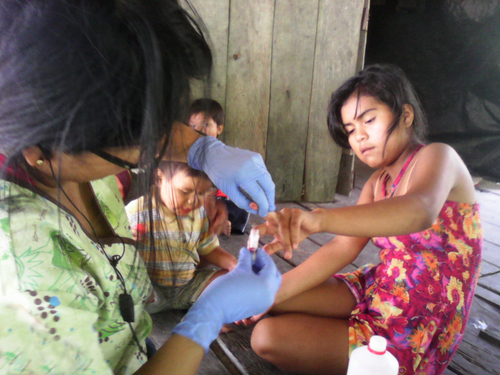
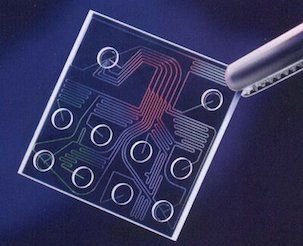

can we have a reference please?
https://phys.org/news/2017-06-lab-chip-health-germs-pollutants.html
http://pubs.rsc.org/en/Content/ArticleLanding/2017/LC/C7LC00035A#!divAbstract
you can find more on internet, this was just a non technical article easy to read and understand for everyone, but if you are interested you can go deeper, there are a lot of papers about it!
Bella la prevenzione ma naturalmente c'e' anche il rovescio della medaglia. Tipo:
"Vuoi lavorare da noi? ...Ah si?....Facci veder il tuo Lab Chip ....ultimi 6 mesi prego."
hahahah be si.. prevedo un crollo delle assicurazioni sulla vita
That is a giant step. I watched the video and other than showing color in a nice pattern it did little to explain how the chip works. I think the subset of the MEMS maybe generating a magnetic field which works to polarize the molecules in the blood sample to separate. Thereby acting as a filter for the blood. I'm not sure how it can filter out the DNA to a point where one can identify the markers. In the lab, they use reagents to chemically separate the bonds and they use filters to eliminate the unwanted molecules. This method appears to be using magnetic fields to do the bond breaking. Thank you for the post, it was very thought provoking.
you are right! in this case is a magnetic fields but there are other that works completely different way, there are a lot of papers about this topic!
I will do a search. Thank you.
upvoted 😊
thanks!
This post has been ranked within the top 80 most undervalued posts in the second half of Sep 07. We estimate that this post is undervalued by $13.79 as compared to a scenario in which every voter had an equal say.
See the full rankings and details in The Daily Tribune: Sep 07 - Part II. You can also read about some of our methodology, data analysis and technical details in our initial post.
If you are the author and would prefer not to receive these comments, simply reply "Stop" to this comment.